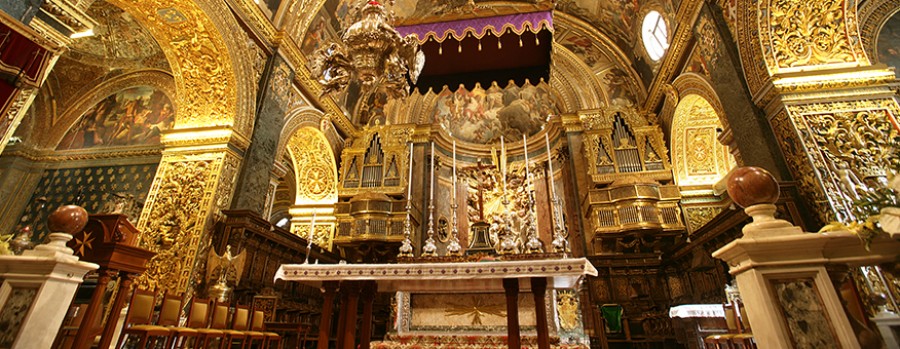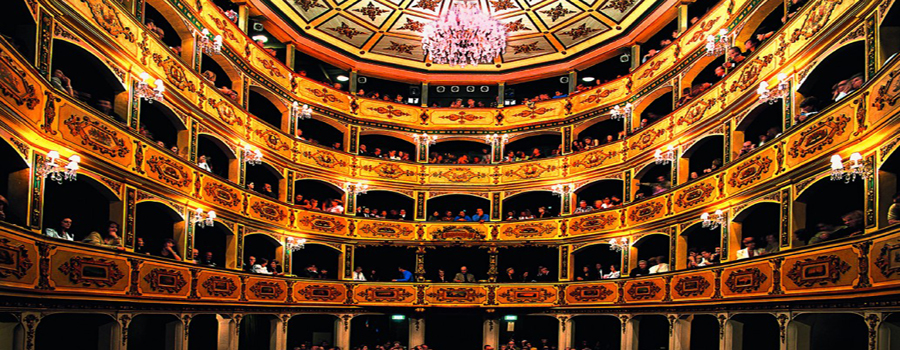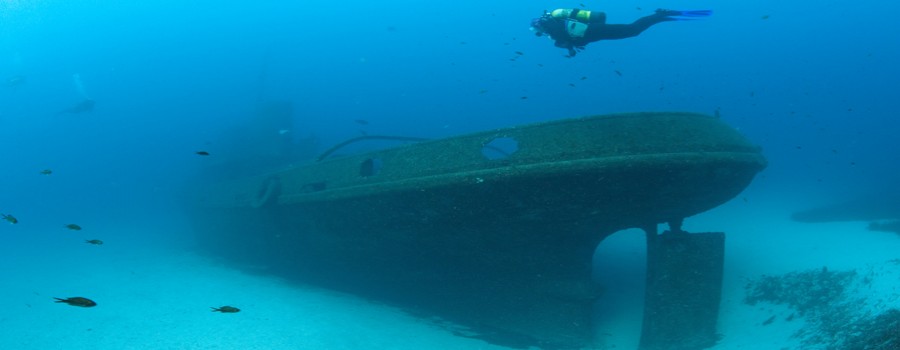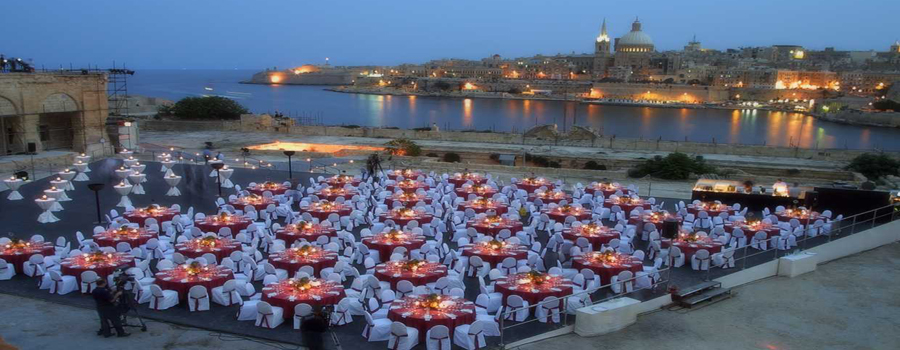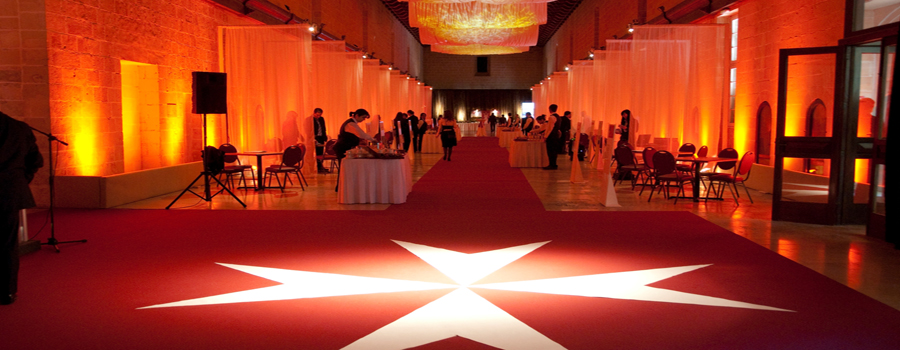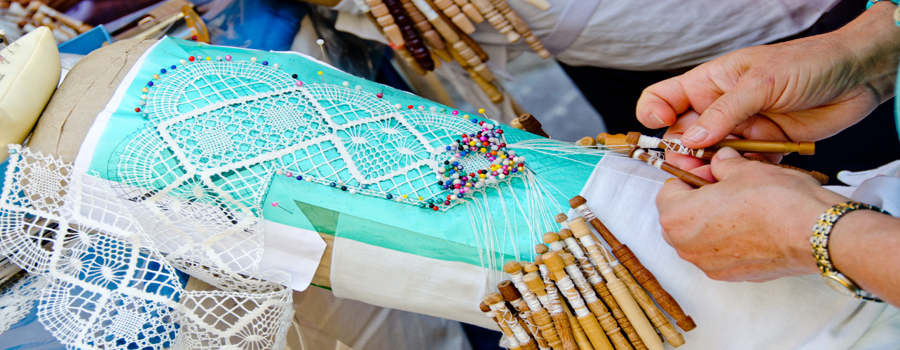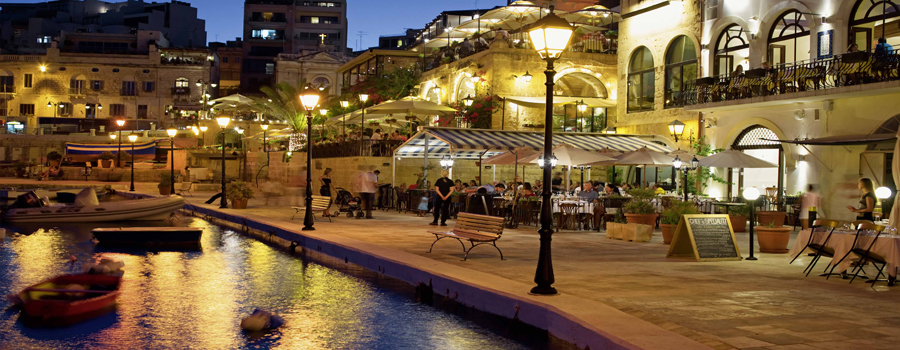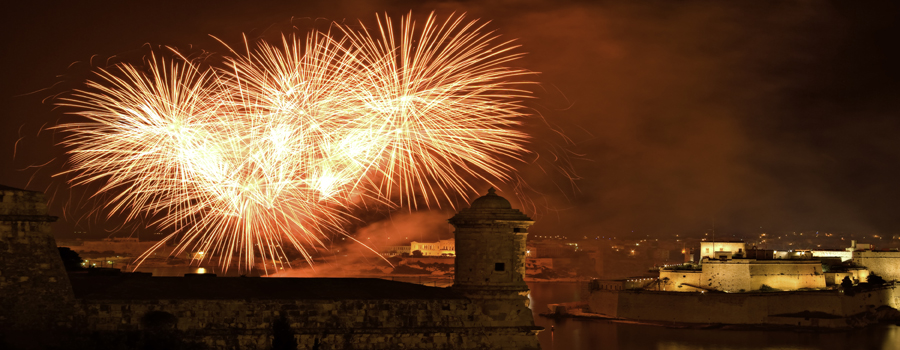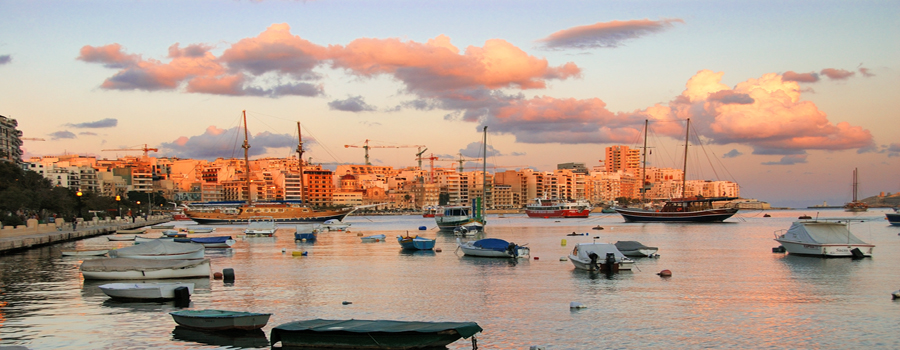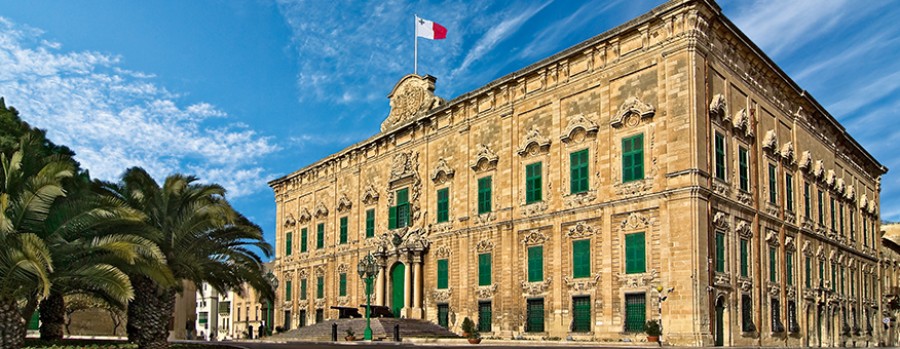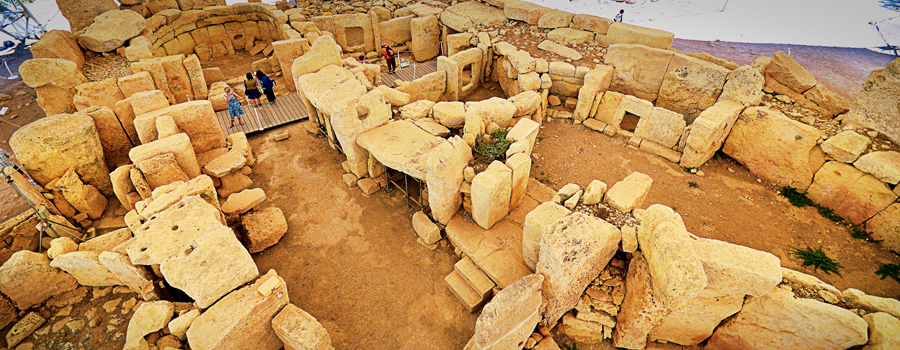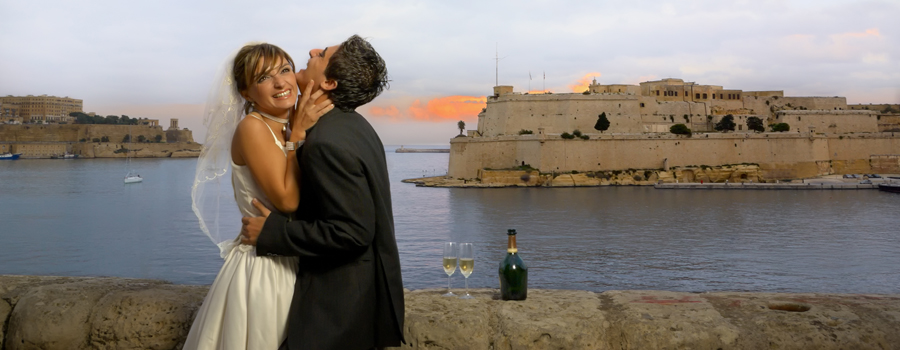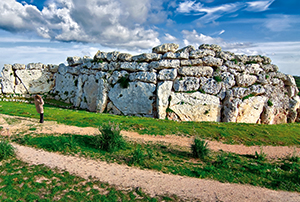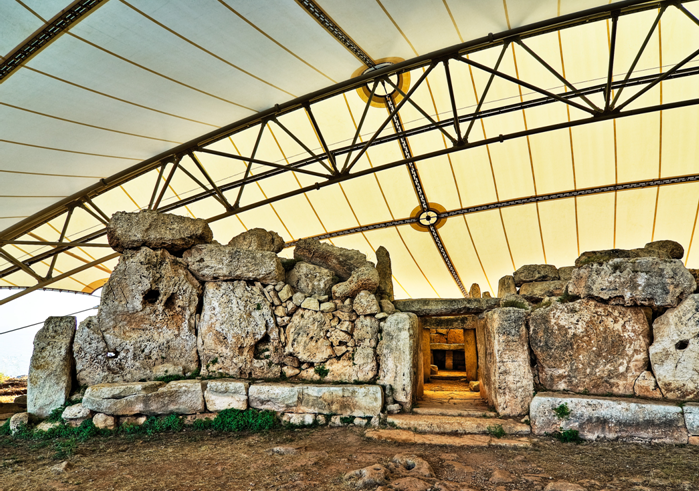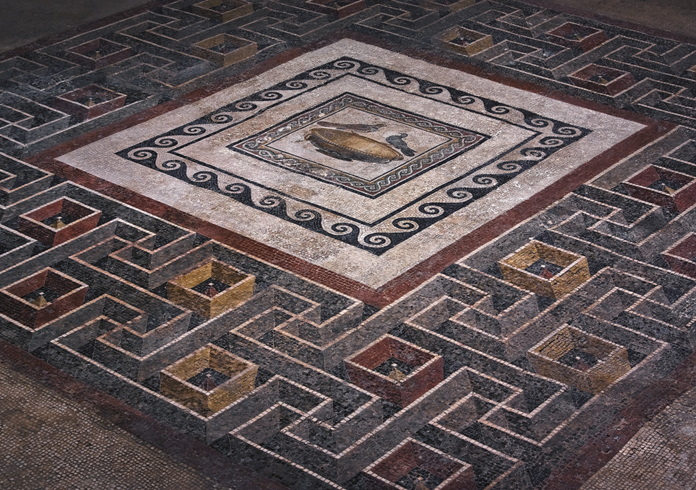 Archaeological sites
Archaeological sites
Malta’s rich archaeological heritage sets Malta apart from other destinations. There are megalithic monuments, Bronze Age dolmens, Punic tombs, remains of Roman villas and traces of prehistoric man which defy explanation, such as the mysterious “cart” ruts. For three millennia from circa 5,200 B.C., the archipelago was home to a unique, temple-building civilisation.
Malta and Gozo’s temples are thought to be the oldest free-standing buildings known to man. One site is particularly special: the Hypogeum is a labyrinth of underground chambers probably used as both a burial site and a temple. The islands’ temples are UNESCO World Heritage Sites and are open to the public. A good place to start your tour is at the National Museum of Archaeology, Valletta, and the Hypogeum itself.
The following is a selection of the major archaeological sites which should be included in your archaeological programme.
Borg In-Nadur Temples

These temple ruins are situated in the rich archaeological southern area of Malta. They are important because they appear to reveal not only a four-apse temple (circa 2,000 B.C.) but also a fortified, Bronze-age domestic settlement. The remains of a large, defensive wall lie nearby. The wall runs across the head of a promontory between two valleys leading down to St. George’s and Pretty Bay. Traces of Bronze Age huts were discovered lying just behind the wall.
This site is open on request.
Clapham Junction & Għar il-Kbir
 Ghar il-Kbir (the Great Cave), found on a hill south of Buskett Forest, was inhabited from prehistoric times until 1835. It is not one cave, but consists of several caves, which were used as cave houses. More interesting though is the impressive concentration of cart ruts around the cave. Thought to date from Neolithic times, these enigmatic tracks or parallel grooves are hewn into the rock and criss-cross one another. No one really knows how they were made nor what they were used for. They may have been for transporting top soil since the Islands would already have been largely deforested and rather barren by late prehistoric times.
Ghar il-Kbir (the Great Cave), found on a hill south of Buskett Forest, was inhabited from prehistoric times until 1835. It is not one cave, but consists of several caves, which were used as cave houses. More interesting though is the impressive concentration of cart ruts around the cave. Thought to date from Neolithic times, these enigmatic tracks or parallel grooves are hewn into the rock and criss-cross one another. No one really knows how they were made nor what they were used for. They may have been for transporting top soil since the Islands would already have been largely deforested and rather barren by late prehistoric times.
Ġganija Temples, Gozo
The Ġgantija Temples (place of giants) are thought to be the oldest free-standing structures in the world. They are among the best-preserved temples on the Maltese islands. Excavated between 1816 and 1820, the complex comprises two Neolithic temples dating from the
third millennium B.C. (3,600 to 3,000 B.C.).
The temples are made up of two separate units enclosed by a wall and sharing a common facade. The concave walls of the temples suggest that the whole structure was once roofed. In both temples the inner apses have niches with rudimentary altars. The outer temple walls are impressive: the largest megaliths are round six by four metres and the wall may once have stood at a height of 16 metres. Traces of mortar indicate the temples were once plastered over. The large forecourt suggests that congregations would have gathered outside to attend rituals, while the inner rooms of the temple may have been reserved for the shaman or priest. During the 1827 excavations, pottery, vases and statuettes were unearthed. These are now displayed in the archaeology museums in Victoria and Valletta.
Għar Dalam Cave & Museum
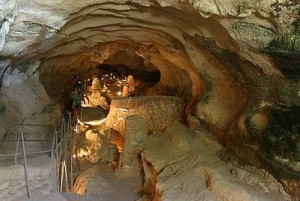 Għar Dalam Cave is a highly important site as it was here that the earliest evidence of human settlement on Malta, some 7,400 years ago, was discovered.
Għar Dalam Cave is a highly important site as it was here that the earliest evidence of human settlement on Malta, some 7,400 years ago, was discovered.
The display area consists of two parts: the cave and the museum which exhibits a remarkable wealth of finds from animal bones to human artefacts. The cave is some 144 metres deep, but only the first fifty metres are open to visitors. The history of the cave and of the Islands can be decoded from Għar Dalam’s stratigraphy. The lowermost layers are more than 500,000 years old and contained the fossil bones of dwarf elephants, hippopotami, micro-mammals and birds. Above the pebble layer is the so-called “deer” layer which dates from circa 18,000 years ago. The top layer or “cultural layer” dates from less than 10,000 years ago and holds evidence of the first humans on the island.
The museum was opened to the public in the early 1930’s and is a piece of history in its own right. A didactic display opened to the public in 2002 covers various aspects of the cave’s formation and charts the animal and human finds. It also provides information on the forms of fossil fauna that were present on the Maltese islands during the Ice Age.
Much of interest has been unearthed at Haġar Qim, notably a decorated pillar altar, two table-altars and some of the “fat lady” statues on display in the National Museum of Archaeology, Valletta. The largest megalith at Haġar Qim is some seven metres high and weights around 20 tons. The site itself has connotations with a fertility cult. Another aspect of Haġar Qim is the small, three-apse structure near the temple – this may have been the quarters of the temple’s priest. Other temple ruins stand a few metres away from the main temple.
Mnajdra Temples
The Mnajdra Temple group stands isolated about 600 metres further down a cliff top from Haġar Qim Temples. Mnajdra is made up of two sizeable temples and is thought to date from around 3,400B.C. The temple construction shows the great skill of its builders. The third temple at Mnajdra is perhaps the finest surviving temple in Malta. The masonry shows intricate knowledge of building techniques and excellent workmanship. The spiral carvings and decorated, pitted slabs give an exceptional aspect to this remarkable site. The ruins of Mnajdra yielded valuable relics. The lack of any metal objects here and at other similar temples is evidence of its Neolithic origin.
Hal-Saflieni Hypogeum Temples
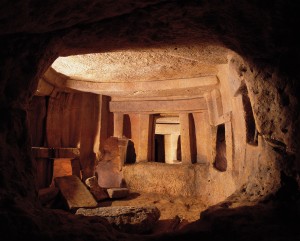 The Hypogeum has been designated a UNESCO World Heritage Site. The Hypogeum is a labyrinthine complex of man-made chambers hewn out of the limestone extending some 11 metres below ground. It appears to have been used both as a burial site and as a temple. Neolithic man carved out the Hypogeum using only antlers and stone picks as tools, and in semi darkness. The Hypogeum is made up of three superimposed levels. The upper level resembles the earlier rock-cut tombs found elsewhere on the islands. The middle level, hewn out during the temple
The Hypogeum has been designated a UNESCO World Heritage Site. The Hypogeum is a labyrinthine complex of man-made chambers hewn out of the limestone extending some 11 metres below ground. It appears to have been used both as a burial site and as a temple. Neolithic man carved out the Hypogeum using only antlers and stone picks as tools, and in semi darkness. The Hypogeum is made up of three superimposed levels. The upper level resembles the earlier rock-cut tombs found elsewhere on the islands. The middle level, hewn out during the temple
period (3,800 – 2,500 B.C.) is made up of numerous chambers. Many statuettes, amulets, figurines and vases were recovered here. The most famous figurine is that of the so-called Sleeping Lady, a reclining figurine, perhaps meant as a representation of eternal sleep. It is on display at the National Museum of Archaeology, Valletta. The lower storey is thought to have been a storage area maybe of grain.
Roman Baths
 A short distance uphill on the road from Mgarr to Ghajn Tuffieha are the remains of a Roman country house or villa. The site was excavated in 1929. Little is left of the villa proper but the baths which were attached to the house are still in a good state of preservation. As in the case of the Roman `Villa’ in Rabat, this site gives a good idea of the relative ease of life enjoyed by the Romans serving in Malta. The baths consist of a Tepidarium (warm bath) with its fine mosaic floor, and a Frigidarium (cold water bath), and a Caldarium (hot steam room). It appears that this country house had all the comforts expected in those days by a man of substance and of cultivated tastes.
A short distance uphill on the road from Mgarr to Ghajn Tuffieha are the remains of a Roman country house or villa. The site was excavated in 1929. Little is left of the villa proper but the baths which were attached to the house are still in a good state of preservation. As in the case of the Roman `Villa’ in Rabat, this site gives a good idea of the relative ease of life enjoyed by the Romans serving in Malta. The baths consist of a Tepidarium (warm bath) with its fine mosaic floor, and a Frigidarium (cold water bath), and a Caldarium (hot steam room). It appears that this country house had all the comforts expected in those days by a man of substance and of cultivated tastes.
Skorba Temples
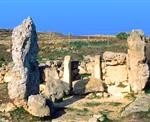 The Skorba Temples comprise of two temple remains, side by side. Skorba was excavated in the 1960s and is one of the most informative sites since it was left untouched during the first two phases of archaeological digs at temple sites in the early 19th and 20th centuries. At Skorba a typical three-apsed temple was built in the Ġgantija phase (3,600 – 3,200 B.C.) replacing a village that had been inhabited since the Għar Dalam phase (5,000 – 4,300 B.C.). Remains include the stone paving of the entrance passage, with perforations to carry libation offerings, the torba floors of the apses, a 3.90 metre high slab of coralline limestone and a step covered with pitted decoration.
The Skorba Temples comprise of two temple remains, side by side. Skorba was excavated in the 1960s and is one of the most informative sites since it was left untouched during the first two phases of archaeological digs at temple sites in the early 19th and 20th centuries. At Skorba a typical three-apsed temple was built in the Ġgantija phase (3,600 – 3,200 B.C.) replacing a village that had been inhabited since the Għar Dalam phase (5,000 – 4,300 B.C.). Remains include the stone paving of the entrance passage, with perforations to carry libation offerings, the torba floors of the apses, a 3.90 metre high slab of coralline limestone and a step covered with pitted decoration.
Ta’ Haġrat Temples
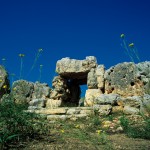 Ta’ Haġrat dates from around 3,600 – 3,200 B.C. and is one of the earliest temple buildings in Malta. Ta’ Haġrat is smaller than many of the islands’ temples, at 15 metres long internally, but it is better preserved. The temple, with its characteristic, imposing façade, is almost undoubtedly a partner to the Skorba temples lying just a kilometre away. Ta’ Haġrat comprises a double temple consisting of two adjacent buildings both of which are less formally planned than is usual in temple construction. The smaller temple abuts the major one on the north side.
Ta’ Haġrat dates from around 3,600 – 3,200 B.C. and is one of the earliest temple buildings in Malta. Ta’ Haġrat is smaller than many of the islands’ temples, at 15 metres long internally, but it is better preserved. The temple, with its characteristic, imposing façade, is almost undoubtedly a partner to the Skorba temples lying just a kilometre away. Ta’ Haġrat comprises a double temple consisting of two adjacent buildings both of which are less formally planned than is usual in temple construction. The smaller temple abuts the major one on the north side.
Tarxien Temples
This unique group of temples date from 3,150 to 2,500 B.C. and are the most complex of all temples in Malta. They comprise four temple units linked by a square court. They were the last to be built on the  islands. Their skilful construction and the elaborate design and workmanship suggest that the temple builders had gained considerable expertise over the millennia since the first phase of megalithic construction. The temples are renowned for the detail of their carvings, which include stone idols, domestic animals carved in relief, and altars and screens decorated with spiral designs and other patterns. Of particular note is the chamber set into a thick wall which is famous for its reliefs of two bulls and a sow.
islands. Their skilful construction and the elaborate design and workmanship suggest that the temple builders had gained considerable expertise over the millennia since the first phase of megalithic construction. The temples are renowned for the detail of their carvings, which include stone idols, domestic animals carved in relief, and altars and screens decorated with spiral designs and other patterns. Of particular note is the chamber set into a thick wall which is famous for its reliefs of two bulls and a sow.
The site seems to have been used extensively for rituals which probably involved animal sacrifice. Tarxien is also of great interest because it offers an insight into how the temples were constructed: stone rollers left outside the south temple were probably used for transporting the megaliths. Remains of cremation have also been found here which indicates that the site was reused by later Bronze Age settlers (2,400-1,500 B.C.).
The Roman Domus (Roman Villa)
The mosaic pavements in the “Roman house” at Rabat rank among the finest and oldest mosaic compositions from the western Mediterranean, alongside those of Pompeii and Sicily. They were discovered in 1881 just outside Mdina in the remains of a rich and sumptuously decorated town house of the Roman period.
These remarkably fine polychrome mosaic pavements were uncovered during the first excavations at the site. At that time architectural elements of the building were restored and a number of rooms were constructed over the remains to protect the mosaics.
The site was investigated further between 1920 and 1924 by Sir Themistocles Zammit, Malta’s first Director of Museums. An upper hall was added to the existing museum so as to provide more exhibition space and a more suitable entrance. Its neo-classical façade with a small front garden was completed in 1925. The best tradition of Hellenistic pictorial culture together with the extremely fine technique undoubtedly qualify the mosaic compositions of the Roman house in Rabat among the finest examples of Hellenistic mosaic art, dating probably from the first quarter of the first century B.C. The Roman House also has an exhibition of artefacts which bear witness to the rich material culture and flourishing Roman civilisation in Malta
The Xarolla Catacombs
Adjacent to the 18th century windmill known as Tax-Xarolla in Zurrieq are the remains of a cluster of late Roman catacombs. Hypogea or catacombs as they are most popularly known, are underground burial places. The discovery of several underground burial spaces or catacombs in the Maltese islands, such as the better known ones in Rabat, indicate that this was indeed the standard funerary practice in antiquity, at least till the early medieval period.
The tombs show evidence of re-use and structural modification indicating that this ancient burial complex was used over a long span of time. A study of pottery remains has established that the cemetery was active between the 3rd and 4th century AD, and during the early Byzantine period between the 6th and 7th century AD.
The Xagħra Stone Circle
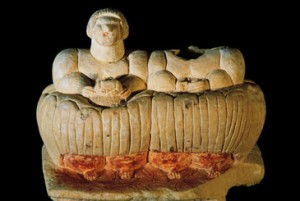 The Xagħra Stone Circle is an underground funerary complex situated in Xagħra on the island of Gozo. It was first discovered by John Otto Bayer in the 1820’s and rediscovered in 1964 after Gozitan researcher Joe Attard Tabone examined a painting by Charles Brochtorff in the National Library in Valletta.
The Xagħra Stone Circle is an underground funerary complex situated in Xagħra on the island of Gozo. It was first discovered by John Otto Bayer in the 1820’s and rediscovered in 1964 after Gozitan researcher Joe Attard Tabone examined a painting by Charles Brochtorff in the National Library in Valletta.
The site was excavated by a joint team from the University of Malta, the Maltese Museums Department and the University of Cambridge. The excavation uncovered the burial ground of the same community which practiced its rituals in the nearby Ġgantija Temples dating principally to the period from 3,000 to 2,500 B.C.
The most notable discoveries include more than 200,000 human bones and prehistoric art relating to the builders of the prehistoric Maltese temples.
An earlier chambered tomb on site dates to the period between 4,100 and 3,800 BC.
Contact us at V. Tabone Travel should you require any further information or to obtain a quote.




